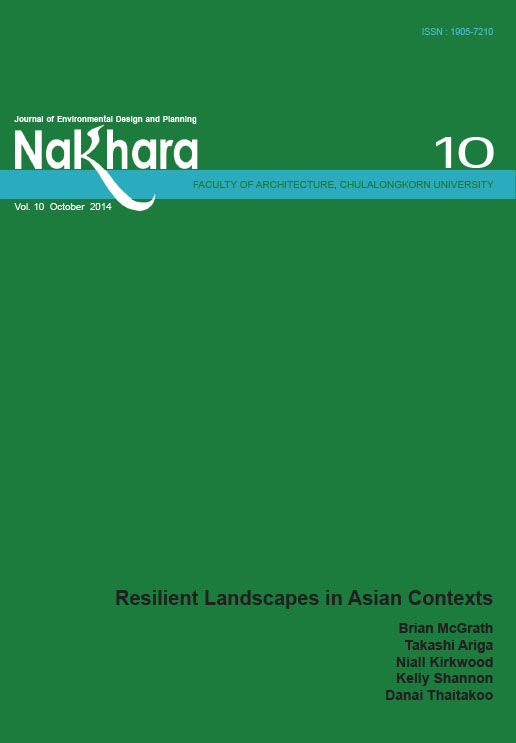Ecological Urban Design Visuality and Landscape
Main Article Content
Abstract
This essay describes a research project that aims to shape ecological urban design practice in two
Asian Mega Deltas. This is important because many important ecological concepts such as urban
heterogeneity become more abstract when considered in relation to everyday life. However, these concepts are key to meeting sustainability goals through supporting the components of resilience. The research project engages heterogeneity through the type of democratic visuality and spatial imaginary afforded by aerial photography and satellite imagery. This inter-referenced visuality, created by airplanes, satellites, sensors, interfaces, and handheld devices, is new. It operates differently from older models of cartography, map, plan and master plan making in ways that are important to understand, and to use. In order to describe the two Asian Mega Deltas, this essay uses inter-referencing not only along a visual dimension, but it is also engaged as a syncretic mode of comparison that aims to bring Indian and Chinese people who live in and from the deltas toward a closer understanding of their differences. Therefore the two Asian Mega Deltas, the Ganges-Brahmaputra-Meghana and the Yangtze, are aligned in the drawings that illustrate this essay
not only in relation to nation states, but also in relation to shared experiences and practices that explore oceans, rivers, and city making in a mega delta environment.

